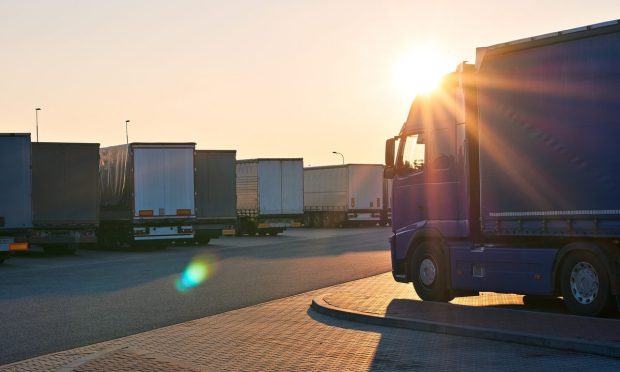Blockchain in Action: TradeLens Connects Shipping, Customs, Trade Financing

If there’s one blockchain project that truly shows what the technology is capable of, it’s TradeLens, which has connected nearly every part of the global shipping industry.
Created in 2018 by container shipping giant Maersk and IBM Blockchain, it had big dreams and big obstacles. TradeLens wanted to create a blockchain-based supply-chain-management tool that would convince all of the competing players in all segments of the industry to work together to trust the incredibly complex exchange of information needed to make the business of moving widgets around the world flow smoothly to a distributed ledger.
That includes shipping lines, of course, but also port operators, customs agencies, railroads and trucking firms, industry software developers, and the financial services providers that make sure everyone gets paid.
Seeing it All
TradeLens is an enterprise blockchain, designed to allow the many links on a supply chain to work together on a single, trustworthy database
It’s a shared information network that lets clients trace their cargo containers in real time to see any snarls in the supply chain coming, letting them do things like making inventory decisions. Port authorities and trucking firms can see when ships will be delayed, or arrive early, and reschedule accordingly.
In February, TradeLens claimed a milestone when Swiss agrichemical firm Syngenta and HSBC bank used a fully digital letter of credit to pay for a shipment of goods on Maersk’s Sealand ocean carrier line between South Korea and Bangladesh using an also-digital bill of lading. Less than 0.1% of such bills of lading are digitized, TradeLens said in a statement calling it the “holy grail of shipping.”
Syngenta estimated the blockchain transaction saved it 10 days of paperwork, getting the product to the client far faster. It helped that the South Korean port authorities and customs agency are also TradeLens members.
“Removing paper from the process should not only increase the efficiency and velocity of trade, but also enhance the appeal of the letter of credit as a trade finance solution,” said Sanjay Tandon, HSBC’s head of product management, global trade and receivables finance for Asia Pacific.
Trust the Blockchain
Blockchain brought two big strengths to the task of unraveling this staggeringly complex web of transactions: It is immutable, and it is trustless.
See more: PYMNTS Crypto Basics Series: What’s a Blockchain and How Does It Work?
Once written onto a decentralized blockchain, transactions can’t be changed — in other words, they’re immutable — because they are viewable by anyone. The digital ledger is stored on many nodes, which all have to agree to write new transactions and are all interconnected like the links of a chain. So changing transaction data anything would require changing everything that came after it.
Second, one of the core purposes of blockchain technology is that it enables what cryptographers call “trustless” transactions — meaning one in which two (or more) parties that don’t trust each other can transact without going through a trusted third party like a bank.
And because everyone can see everything, it is easy to trace one cryptocurrency token along a convoluted and crowded path.
That last sentence should have a big asterisk at the end, because TradeLens is an enterprise, or permissioned, blockchain — unlike bitcoin, for instance, not just anyone can set up a node, maintain a full copy of the ledger and transact on it.
Also, it is possible to restrict who can access some information written onto the blockchain.
For example, the farmers, truckers, suppliers and distributors who deliver Romaine lettuce to Walmart all put information on the IBM Food Trust blockchain that Walmart can see in real time. But the trucking companies bringing that produce can’t track competitors’ rigs. Nor can Walmart see the trucks those companies have moving produce for Dole, which is also on IBM Food Trust. But the truckers can see their whole fleet.
Herding Cats
When building TradeLens, the first job was to get the major ocean carriers to agree to work on a system created and run by a competitor. Today five of the six largest shipping firms are on TradeLens, including No. 1 MSC, No. 2 Maersk and No. 3 CMA. The 10 members account for more than half the world’s shipping containers.
Back when TradeLens was starting out, Susan Joseph, who worked for B3i, a firm developing a similar product for the insurance industry said on a conference panel that “the technology is hard, but the people are harder. It is really a social question. You’re putting a bunch of competitors together, and you’ve got to trust them. Only, you never did before. That is, I think, the major problem.”
Which is to say, it requires a trustless solution.
